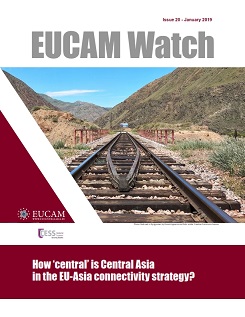How ‘central’ is Central Asia in the EU-Asia connectivity strategy?
How ‘central’ is Central Asia in the EU-Asia connectivity strategy?
Author(s): Jos Boonstra, Andreas Marazis, Boris Iarochevich, Frans-Paul van der Putten, Jacopo Maria Pepe, Anastasiya Ten, Sabrinisso Valdosh, Gulnura Chekirova
Subject(s): Supranational / Global Economy, Economic policy, International relations/trade, Economic development, Geopolitics, Transport / Logistics
Published by: CEPS Centre for European Policy Studies
Keywords: European Union; Central Asia; connectivity strategy; international trade; road connections; transport;
Summary/Abstract: At the end of 2018, the European Union (EU) presented its Europe-Asia connectivity strategy (CS). The CS applies to transport, energy, and digital networks, and includes a human dimension. It is also linked to several ongoing and planned EU projects and processes. While it has at its core the promotion of EU trade, the CS appears to be very broad and quite open to interpretation. So far, the CS has raised more questions than provided answers. The main geo-political question is whether there is a real need for a connectivity strategy with Asia or if this is the EU’s response to the Chinese Belt and Road Initiative (BRI). While most observers seem to lean towards the latter, given Asia’s rising economic importance, it is still unclear how the EU plans to compete with China in Asia or if the EU will try to establish synergies around concrete issues between the CS and BRI.
Series: EUCAM Watch
- Page Count: 13
- Publication Year: 2019
- Language: English
- Content File-PDF

